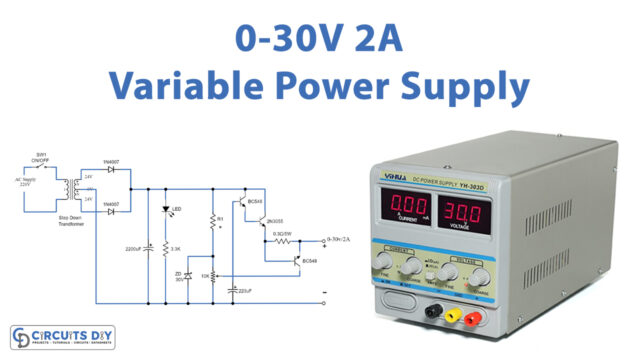Introduction
Switched-mode power supply (SMPS) is an abbreviation for switch mode power supply.SMPS is a high-efficiency power supply that is commonly used in electronic equipment such as computers, battery chargers, and other electrical equipment that requires a consistent and efficient power supply. It’s being used to convert power (voltage) utilizing switching devices that are switched on and off at high frequencies alternately. Thus, in this tutorial, we are going to make a “Simple SMPS Circuit”.
To make this circuit, we are using TNY267 as our key component. Here are some of its features:
- Reduce System Cost
- Better Cost/Performance
- Extremely Energy Efficient
- High performance at a low cost
Hardware Required
| S.no | Component | Value | Qty |
|---|---|---|---|
| 1. | IC | TNY267 | 1 |
| 2. | Optocoupler IC | EL817 | 1 |
| 3. | Transformer | – | 1 |
| 4. | Schottky | SB106 | 1 |
| 5. | Diode | 1N4007 | 1 |
| 6. | Diode | P6KE200A | 1 |
| 7. | Diode | FR106 | 1 |
| 8. | Zener Diode | 12v | 1 |
| 9. | Glass Fuse | – | 1 |
| 10. | Lamp | – | 1 |
| 11. | Capacitor | 10uF, 470uF, 0.1uF | 1, 1, 1 |
| 12. | Resistor | 1KΩ, 20Ω, 680KΩ | 1, 1, 1 |
| 13. | 3-Pin Connector | – | 2 |
Circuit Diagram

Working Explanation
The first stage of this simple SMPS circuit is a Rectifier and Filter, which converts high voltage AC to high voltage DC. This operation eliminates high spikes and surges. High voltage DC is controlled by a High-Frequency Switching Device which varies depending on the design. This switching block samples the high voltage DC with feedback path reference.
The flyback or small ferrite core transformer steps down the voltage as needed depending on the design, followed by the Rectifier and filter portion, which provides a constant DC output voltage with no current variations.
A part of the output is used as a feedback signal, which is compared to the reference voltage, and the error (if any) is amplified depending on the error. The switching device regulates the output by changing the frequency of the PWM pulse. As a result, even the tiniest fluctuations in output DC were quickly controlled without compromising load.
Application and Uses
- Servers, power stations, and personal PCs all utilize it.
- We can use it to charge batteries in automobiles.
- Also, to generate electricity in factories and industries.







